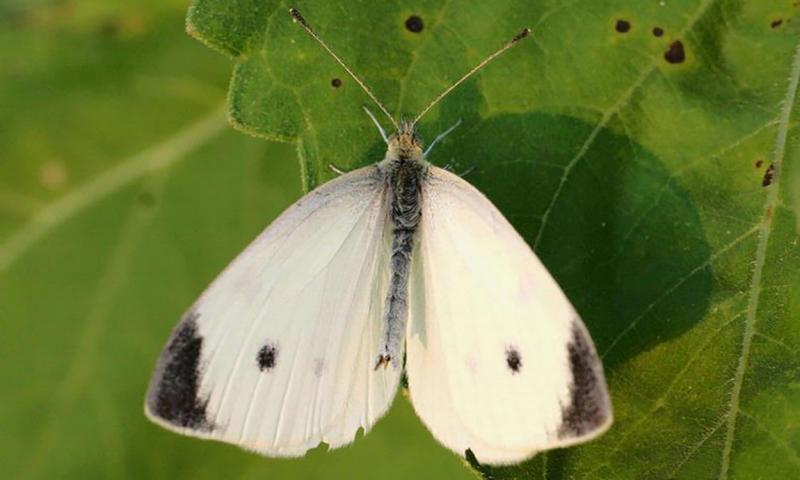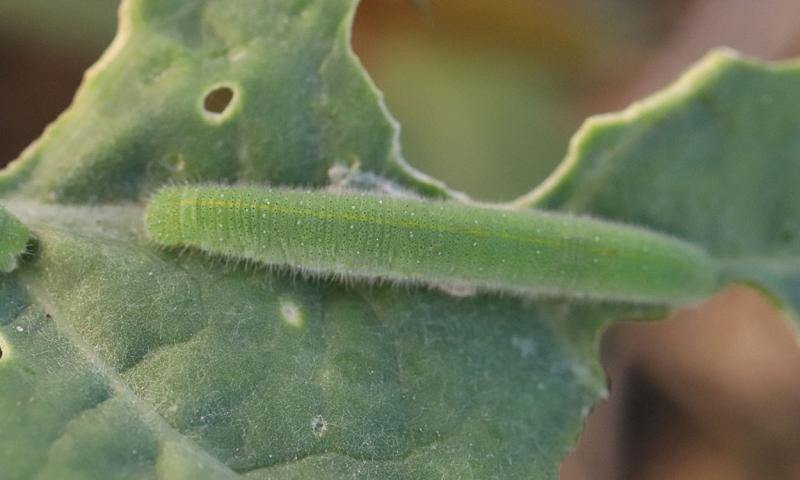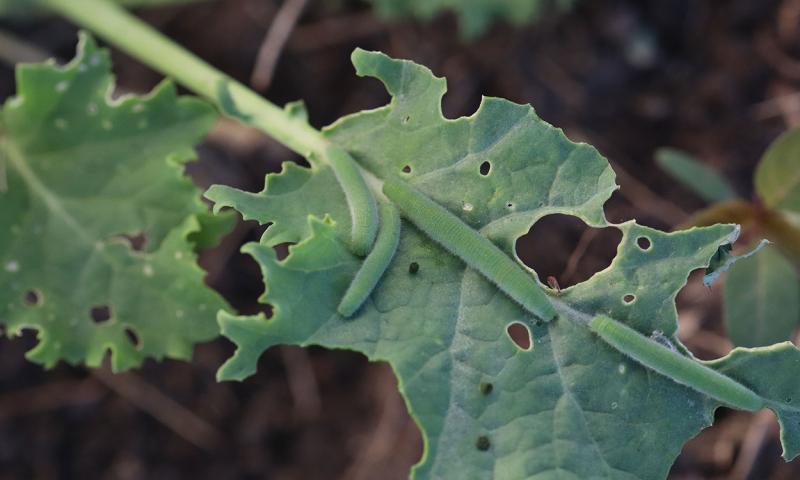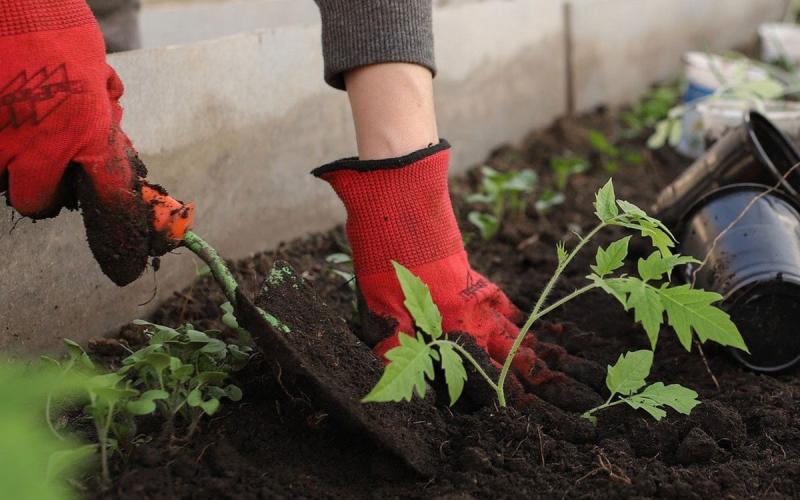
Originally Submitted: May 19, 2021
This week I noticed the first cabbage white butterflies in my garden in Brookings (Figure 1). Although the butterflies themselves are not an issue, their immature stage (caterpillars often referred to as the imported cabbageworm) are an issue.
So far, I haven’t seen any cabbage white caterpillars, but it will only be a matter of time since the butterflies are now active. The cabbage white caterpillars feed on cabbage, broccoli, Brussel sprouts, cauliflower, kale, turnips and radishes along with several broadleaf weeds.
Cabbage White Butterfly and Caterpillar Identification and Lifecycle

The butterflies are white and have a dark marking on the tip of the wings and two black spots on each wing. Sometimes the inner spot is faded (Figure 1). These butterflies will often be observed fluttering around the garden, but pay close attention to the plants that they land on, as they are likely laying eggs on the underside of the leaves.
Within a week of seeing the butterflies, the caterpillars will be active on the plants that the eggs were laid on. Signs of their presence on garden crops include small, smooth holes, which are produced by the recently hatched caterpillars. As they develop, the caterpillars may skeletonize entire leaves, leaving only the midrib veins. Severe defoliation can occur rapidly once caterpillars are present, as it is common to observe more than one caterpillar on a single plant or even on a single leaf (Figure 2). If left unmanaged, cabbage white caterpillars can defoliate the entire plant. In plants like cabbage, the caterpillars may also bore into the developing heads.
The cabbage white (imported cabbageworms) caterpillars are dark green with a solid yellow line that runs down the middle of their back. They have a broken yellow line or hashmarks on each side of their body (Figure 3). The caterpillars have a fuzzy appearance when examined due to the presence of numerous fine hairs that cover their bodies. When disturbed, the caterpillars will curl up but will typically remain on the leaf they are feeding on.
Management

Since the cabbage white caterpillars are not extremely mobile, it is possible to simply remove the caterpillars by hand and destroy them. However, insecticides labeled for gardens can be used if there are a lot of caterpillars present on numerous plants. Remember, if you use an insecticide, to always check the pre-harvest interval that is present on the label. The preharvest interval indicates the number of days after treatment that must elapse before harvest of the treated crop can occur. It is also important to read the label and determine what personal protective equipment (PPE) is necessary for application. If applying an insecticide dust, we recommend wearing a dust mask or respirator to ensure that the insecticidal powder is not being inhaled. Chemical-resistant gloves should also be used to reduce exposure. Organic insecticides that are effective against imported cabbageworms include products containing Bt (Bacillus thuringiensis) or spinosad as the active ingredient.
Cabbage white caterpillars can often be managed by natural enemies (e.g. wasps) or diseases that affect their populations. Since there are two-to-four generations per year of imported cabbageworms, it is important to continue scouting for these pests even after one generation of caterpillars is effectively removed from the garden. Monitor the plants for caterpillar activity and scout more intensively after cabbage white butterflies are observed in the garden.
If the caterpillars are present on harvested plants or inside of heads, soak the harvested plant parts in a cold saltwater bath, which will effectively remove the caterpillars and any other critters that are present.


